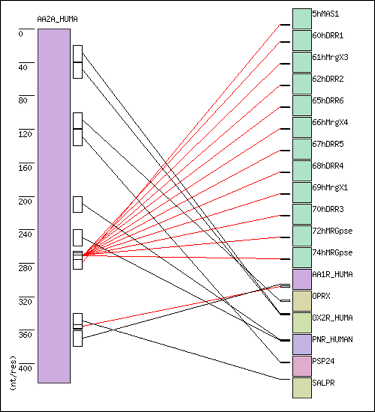Genome Evolution
Allaby Research Group
The evolutionary history of our crops and other plants has inevitably involved genomic change. The increased availability of genome-wide data sets for plants means that we can use bioinformatics approaches to examine how plant genomes have changed during the Holocene and before, and also how different parts of the genome are specifically associated with different processes. Polyploidy, for instance, resulted in changes in genome organization in some crop lineages. At ARG we are engaged in examining whether paleogenomics can be used to capture a snapshot of genome enlargement from 2000 year old cotton samples from ancient Egypt.
At ARG we have developed high-throughput phylogenomic approaches to look for mosaicism that may be caused by recombination (Allaby and Woodwark 2007, Moore and Allaby 2008). We have released the TreeMos software application to allow researchers to employ these approaches in an intuitive and automated manner.

Examples of correlated and reciprocal mosaicism in the human GPCR gene superfamily identified and visualised using TreeMos
One would expect many genomic rearrangements, subfunctionalization and neofunctionalization to be associated with polyploidy events in particular. Consequently one current research area is to track phylogenetic mosaicism in large superfamilies of genes and relate mosaicism to polyploidy and palaeoployploidy events. This approach has already been used to demonstrate the long history of recombination evident in the human GPCR family (Allaby and Woodwark 2007). The technique allows one to visualize quite disparate relationships, and could be used to display lateral gene transfer between prokaryotic genomes, for instance.
Genome evolution publications
Moore J.D., and Allaby R.G. (2008) TreeMos: a high-throughput phylogenomic approach to find and visualise phylogenetic mosaicism. Bioinformatics 24(5):717-718.
Allaby, R.G., Woodwark, M. (2007) Phylogenomic analysis reveals extensive mosaicism in the Human GPCR superfamily. Evolutionary Bioinformatics 3:155-168.
Allaby R.G. and Woodwark M. (2004) Phylogenetics in the Bioinformatics Culture of Understanding. Comparative and Functional Genomics 5:128-146.
